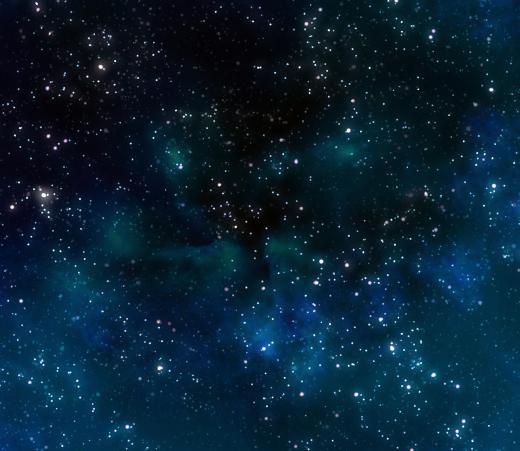What is a Yellow Dwarf?
A yellow dwarf is a type of main-sequence star, more properly called a G-type main sequence star. Earth's sun is a typical example of this type of star. This type of star has a mass of between 80 percent and 120 percent of the mass of the Earth's sun. These stars vary in color from white to light yellow. The sun is actually white, but looks yellow from Earth's surface because its light is scattered in the atmosphere.
Although they are called dwarfs, this term is used only in comparison to the colossal size of giant stars. Yellow dwarfs are still larger than the great majority of stars in the galaxy, most of which are smaller, cooler orange, or red dwarfs. The sun has a volume of approximately 1,412,000,000,000,000,000 cubic kilometers and a mass of approximately 1,989,100,000,000,000,000,000,000,000,000 kilograms, making it 1,300,000 times larger than the Earth and 332,900 times more massive. It is composed of about 75 percent hydrogen. Most of the remainder is helium, plus a few other elements, such as oxygen, carbon, and iron, in trace amounts.

A yellow dwarf is a main-sequence star, producing energy by converting hydrogen to helium through nuclear fusion in its core. Outward pressure produced by this energy is balanced by the force of the star's own gravity, creating a state called hydrostatic equilibrium that keeps the star from either collapsing or exploding. Every second, the sun fuses about 600,000,000,000 kilograms of hydrogen into helium and converts about 4,000,000 kilograms of mass into energy. Most of this energy is in the form of heat that gradually transfers toward the star's surface, where it is released as electromagnetic radiation, including visible light, and kinetic energy. This produces temperatures of between 5,000 to 6,000° Kelvin at the surface, going up to 15,000,000° Kelvin in the core.
A yellow dwarf remains on the main sequence for around ten billion years, slowly becoming brighter as it ages. As more and more hydrogen in the star's core is converted into helium, the core contracts and grows hotter until its energy output overcomes the star's own gravity. At this time, the star begins to expand, leaving the main sequence and becoming a red giant that will eventually evolve into a white dwarf. Yellow dwarf stars are not massive enough to become supernovae or black holes. The sun is currently about halfway through the main-sequence phase of its life.
Yellow dwarf stars are fairly common, making up about 7.5 percent of the stars in the Milky Way galaxy. A yellow dwarf can be solitary like the sun or part of a binary or multiple star system. Well-known yellow dwarfs visible from Earth with the naked eye include Alpha Centauri and Tau Ceti.
AS FEATURED ON:
AS FEATURED ON:











Discussion Comments
@Viranty - Unfortunately, I don't think that's a question that can be answered directly. No one knows how big the universe is, as it has no limits. Also, just because we can see so many stars in the night sky, that doesn't mean that they're close by. At all, in fact. For example, whether the sun is shining down on the hottest day or not, it's actually 90 million miles away, nowhere near as close to us as it seems. It really shows us the wonders and expanses of this universe.
Does anyone know how many stars there are in the sky? I don't know if that's a question that can be answered directly or not, but I think it's something interesting to think about regardless. In the summertime, when I look up at the night sky, I often wonder how big the universe is.
@Rundocuri - I agree. There's so much more to astronomy than simply looking up at the night sky. The universe is full of endless possibilities, and not even the astronomy textbooks you read in school begin to scratch the surface.
This article provides good information about yellow dwarfs. I love astronomy and learning about the evolution of stars. Having this knowledge makes it so much more meaningful when you look up at the night sky.
Post your comments